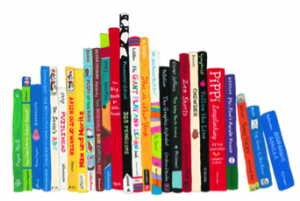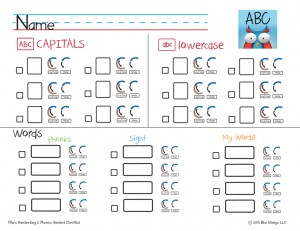![]()
Welcome to Ollie’s Handwriting & Phonics Companion Guide! Below you will find lesson ideas for teachers and therapists, suggestions for parents, and examples of how to use this app with children of different ages and abilities. In addition, explore our free PDF Downloads for helpful supplements to the Ollie App (student & teacher checklists) as well as resources and tips for parents and teachers on improving fine motor & literacy skills.
 How to Use the Ollie App: Suggestions for Parents
How to Use the Ollie App: Suggestions for Parents
Remember to keep things fun and not like a classroom or tutoring lesson! Children often are afraid to do “work” and make mistakes in front of their parents for fear of letting them down. They often show increased stamina in school and have an easier time following demands given by an adult outside the family. For example, many children begin to read simple books at school with their teacher but then refuse to read to their parents at home. Focus not so much on correcting your child when he or she is wrong, but acknowledging his or her skills and small successes and developing an excitement and love for learning. Practicing literacy skills by reading to a younger sibling, pet or stuffed animal is a great way for kids build their confidence and practice their skills.
Examples:
Madison:
Maddison is three years old and is beginning to show lots of interests in letters and sounds. She recognizes the capital M in her name and is noticing print all around her. She has been attempting to do her own writing, which consists of meaningful scribbles and letter like symbols. She is eager to learn how to write her name, especially the letter M.
Sit down with your child and show her the app. Explain that Ollie the Owl is going to teach her the letters and model how to select a capital letter from the Main Screen. Choose a meaningful letter to start with such as M and instruct her to watch how Ollie writes the letter. Keep the Outline option selected. After Ollie demonstrates how to write the letter, model writing the letter yourself or guide her hand over hand with her finger to write the letter. If you guide her hand over hand she will feel that she is rewarded when she hears Ollie clap and yell, “Woohoo!” Allow her to try the letter on her own. As you learn the audio sequence of each letter, repeat this “B, bat, /b/” whenever Ollie, the child, or you are tracing the letter. This will give her a multisensory experience and begin to help her develop beginning phonics skills along in addition to learning the letter names.
Kai:
Kai is a beginning reader and writer. He recognizes his capital letters and is starting to identify lowercase letters and associate them with the appropriate sound. With his growing letter sound knowledge he is ready to start putting three sounds together to read CVC words (consonant-vowel-consonant such as “hat”).
Encourage your child to explore the lowercase letters in the application. Emphasize the importance of watching and listening to Ollie trace the letter (even if he already knows it) just the same way he would pay attention to his teacher. Explain that repeating things over and over really helps his brain remember things and become faster at completing tasks. After completing a few lowercase letters, guide him to the Word section of the application. Allow him to choose a few Phonics Words as well as Sight Words. Pay attention to what words he chose and after playing with the app, help him construct some silly sentences together with the words that he has chosen. Use a small white board to make writing more fun and easily erasable. Have him begin the sentence, “The dog…” and then ask him to verbalize how the sentence ends. Depending on his skills and interest in writing either fill in the rest of the sentence for him or allow him to write it out himself. Don’t correct any spelling errors but allow him to write the sound he hears (phonetic or invented spelling). Help him brainstorm words to add to the My Words section of the app to practice any word he chooses!
 How to Use the Ollie App: Lesson Ideas for Teachers and Therapists
How to Use the Ollie App: Lesson Ideas for Teachers and Therapists
After assessing a child’s current skills, decide what areas the child needs to work on (Recognizing and identifying capital letters? Associating letter sounds with lowercase letters? Quickly and automatically forming lowercase letters correctly? Learning short vowel sounds? Blending and segmenting sounds in words? Decoding CVC words? Automatically reading or spelling sight / high-frequency words?)
Then use the appropriate sections of the app to plan a lesson to enhance these skills. While a child can have fun flipping through the app and choosing what to play with at home, as an educator you want to systematically develop the child’s literacy skills and individualize lessons to ensure the most progress.
In the Classroom:
If you have access to iPads in the classroom, use Ollie’s Handwriting and Phonics as an independent learning station or literacy center. You will need some type of headphones so that students are not disturbing other students. Depending on the needs of your students and their ability to follow directions and work independently, either allow them to choose whatever aspects of the application they want to practice or use a checklist to specify exactly what the child needs to complete during the center and have them record what they did. Use the Student Checklist to hold students accountable for the work they need to complete. Use the Comprehensive Teacher Checklist to keep track of student progress and what skills have been practiced with the application. (Need help implementing checklists? Check out our Guide to Using Checklists here.) If a goal for your students is to encourage proper pencil grip, use the application with a stylus.
Tutoring, Therapy, and One-on-One Support:
Use the comprehensive teacher checklist as a guide to help you remember what your student has practiced already. Use the student checklist when assigning independent work to your student.
Examples:
Zoe:
Zoe can identify all of the capital letters. While she recognizes most of the lowercase letters, she has not yet mastered correctly associating lowercase letters with their appropriate sound. Writing tasks are also challenging for Zoe. Even if she knows the corresponding letter for the sound she is thinking of, it is difficult for her to picture that letter in her mind and remember the steps to form that letter on paper. In addition, Zoe often struggles to sit still and pay attention.
Choose 5 – 7 lowercase letters to work on for the session. Include 1 or 2 letters that she is demonstrating some mastery over to build confidence and ease into the lesson. Go to the Lowercase Letter Main Screen and tell the child to select the first letter that you want her to work on. As Ollie traces the letter, ensure that she is watching the letter formation and listening to the audio. Then allow her to trace the letter herself. Have her trace the letter 2 – 3 times depending on her stamina. While she is tracing the letter, have her repeat the audio sequence she heard when Ollie was tracing the letter – “A, apple, /a/.” Listen carefully to ensure that she is pronouncing the sound correctly. If her pronunciation is incorrect, tap on Ollie to see the tracing sequence again and hear the correct letter sound. In addition, if she forgets how to trace the letter, encourage her to tap Ollie to see the tracing repeated. If she needs more of a challenge, go to the Settings on the Main Screen and click Outline None. Repeat with each letter in your lesson and then allow her to choose her own activity with Ollie when she is done.
Jack:
Jack is able to recognize all of the capital and lowercase letters. He knows all of his letter sounds, but takes significant processing time to verbalize these sounds when shown a letter and asked to make its sound. Interestingly, Jack is able to encode (break apart sounds in words to spell and write) and writes sentences and stories with invented spelling (phonetically spellings by writing down the letter associated with the sound one hears – “kat” for cat, “wut” for what, “prc” for park) with ease. Even though his writing may be readable to a teacher, he may struggle to read back his own writing. When it comes to decoding (sounding out or reading phonetic words) Jack shows significant difficulty.
Jack’s lesson should be similar to Zoe’s above. Choose 5 – 7 lowercase letters to work on for the session. Keep the Outline selected as None for the session. During each letter, really emphasize the drill of watching Ollie trace a letter and listening to the audio sequence. This part of the application serves as a set of flashcards and daily letter/sound drills whose repetition is important in solidifying basic phonics skills in early readers. After watching Ollie, have the child trace the letter on his own and say the audio sequence, “u, umbrella, /u/.” Have the child repeat the letter one or two more times. After the letters for the lesson are completed, go to Words -> Phonics Words and select 2 – 3 words to work on. This will allow him to practice his decoding skills by emphasizing how to blend sounds together to read a whole word.
Tips for Developing Handwriting & Fine Motor Skills
Develop Motor Skills
Encourage participation in variety of large and small motor activities to improve visual-perception skills, coordination, arm/hand/finger strength, and ability to cross the midline*.
Activities that improve visual-motor and coordination skills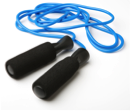
Activities that develop the pincer grasp (pinching with thumb and forefinger)
- put pegs in a peg board or play Battleship
- fuse beads
- glue confetti or small squares of tissue paper onto paper
- sorting pebbles, small rocks or buttons
- make necklaces and bracelets with beads and string/pipe cleaners
- Pick up Sticks
- Don’t Spill the Beans
- Wikki Stix or Bendaroos
- Operation or Perfection
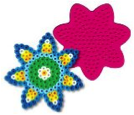
- Legos
- marbles
- dreidels
- chopsticks
- any activity that requires picking up small objects
Activities that strengthen finger, hand and arm muscles
- squeeze on a stress ball (make your own with flour in a balloon!)
- open and close a metal clip or clothespin
- play with playdough or clay

- play with balls of wax (save wax from Babybel cheeses!)
- cut out objects from construction paper
- make food – roll out pizza dough, make cookies with cookie cutters
- paint in broad strokes on an easel (make large X’s to practice crossing the midline*)
- draw with sidewalk chalk outside
- write or draw in a prone position – laying on floor propped up by elbows
- do the monkey bars
- learn an instrument
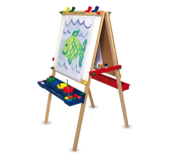 *Crossing the midline is the ability to do work on the opposite side of the body with the dominant hand – i.e. right hand doing work on the left side of the body. How does your child write lowercase t? With two strokes crossing over each other (crossing the midline)? Or with three strokes, one vertical line and two horizontal lines coming out of the vertical line (not crossing the midline)?
*Crossing the midline is the ability to do work on the opposite side of the body with the dominant hand – i.e. right hand doing work on the left side of the body. How does your child write lowercase t? With two strokes crossing over each other (crossing the midline)? Or with three strokes, one vertical line and two horizontal lines coming out of the vertical line (not crossing the midline)?
Encourage Child-Generated Writing
 Provide Materials
Provide Materials
Provide easily accessible writing utensils (pencils, markers, pens, crayons, chalk) and surfaces (paper, whiteboards, chalkboards) during playtime.
Learn Writing through Play
Allow children to observe and imitate you and other real-life situations. Remember children will experiment with writing through different stages (scribbles, symbols and drawings, random letters and numbers, phonetic spelling, conventional spelling and grammar). Allow them to progress through these stages at their own pace and encourage all forms of written communication!
Suggested Activities
- make a grocery list while playing house
- write menus and take orders while playing restaurant
- set up a “concern box” for children to leave confidential notes about things that are bothering them – also cuts down on tattling!
- make cards for family and friends for holidays or just “thinking of you” moments
- write and mail real letters to family and friends
- provide children with a personal journal to record memories and feelings
Establish a Tripod Grasp

Demonstrate how to hold a pencil correctly by teaching your child this technique. Lay the pencil on the table vertically with the point facing toward you. Pinch the pencil just above the point with your thumb and pointer finger. While maintaining this grasp, pick the pencil up and flip it so the body of the pencil rests in the crease between your thumb and pointer finger. Put the remaining three fingers underneath the pencil for support.
To encourage this grasp have your child write with short golf pencils, triangular pencils or crayons, or use a pencil grip such as the Crossover Grip Ergonomic Writing Aid or The Writing Claw
Tips for Enhancing Reading Skills
Point out letters and words in the world around you
Environmental print is print that is found in the environment around us such as road signs, billboards, cereal boxes, etc. When going for a walk outside or looking at objects in your home, point out different letters and words. This helps children develop an awareness of print all around them, understand that print has meaning, and remember words by associating them with images or objects.
Label the home or classroom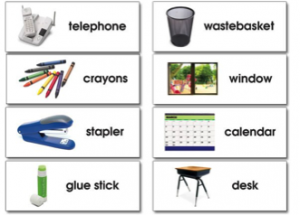
Create your own environmental print by labeling common objects with word cards such as desk, table, door, fridge, computer, bed, etc.
Read to children everyday!
While it’s great for beginning readers to practice reading texts independently, all children, regardless of age and ability, should be read to daily. Reading more complicated story book texts exposes children to complex plots and themes as well as advanced vocabulary they would otherwise not encounter in books at their level – not to mention help them develop a love of books and reading. Read both fiction and non-fiction stories.
Ask open-ended questions about stories
In order to develop deep comprehension skills and independent thinking, children need to be able to not only recall information in texts but apply critical thinking skills and make inferences. Ask questions such as, “What does this remind you of? Why might the character be feeling this way/doing these actions? What might happen next? How could the story have ended differently?”
Provide low-stress opportunities for children to practice reading skills
Many children find it difficult to read in front of other adults, especially parents, for fear of failure. Encourage children to read to younger siblings or students or to an audience of stuffed animals – try not to interrupt!

More Resources
Information & Activities:
Reading Rockets (information) – information, strategies, resources and research for parents and teachers on teaching children to read. Also includes downloadable guides for parents and teachers who are interested in helping children of all abilities excel in reading
Therapy Fun Zone -(information) OT and PT information and fun fine motor activities.
A Child Becomes a Reader: Birth to Preschool (PDF booklet) – based on research done by the National Reading Panel, this PDF provides easy to implement literacy activities for parents to help support reading development at home. It also explains current research and defines literacy terms in a clear, concise manner for parents.
A Child Becomes a Reader: Kindergarten Through Grade 3 (PDF booklet) -based on research done by the National Reading Panel, this PDF provides easy to implement literacy activities for parents of children ages 5 – 10 to help support reading development at home. It also explains current research and defines literacy terms in a clear, concise manner for parents.
NAEYC (information)- National Association for the Education of Young Children. Research and publications such as Young Children for parents and teachers and Teaching Young Children for early childhood educators.
Materials & Supplies
Hubbard’s Cupboard (materials) – information, suggested activities and tons of free downloadable materials for use at home or in the classroom. My favorite is the printable books for sight words, word families and concepts
Reading A-Z – large selection of downloadable, printable, and projectable books for teachers and parents. Includes leveled guided books AA – Z, high-frequency word books, vocabulary books, decodable phonics (words with regular spelling patterns you can sound out) books, poetry, fluency activities, and assessment. Requires a yearly subscription but well worth it! Also check out RAZ Kids!
Education.com – free downloadable and printable worksheets and suggested activities easily searchable by grade and subject. Also includes articles and information for parents and teachers.
Therapro (materials) Sells speech and occupational therapy supplies. Products for sensory, strength, balance, fine motor, gross motor, handwriting, writing and speech needs.
Melissa & Doug (materials)- Educational toys including great art and fine motor supplies.
Lakeshore Learning (materials)- Educational products and toys.
Download PDFs!
Ollie App Comprehensive Teacher Checklist
Ollie App Guide to Using Student & Teacher Checklists
How to Grow a Reader & Writer: Tips for Improving Handwriting, Fine Motor and Reading Skills
